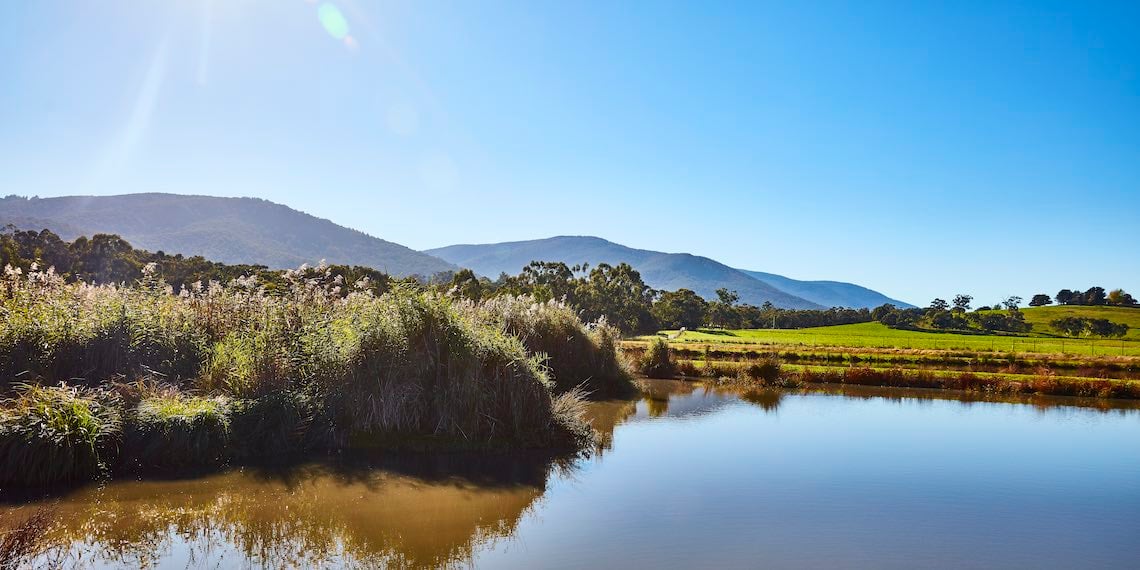How this utility is taking a more robust approach to biodiversity

As water utilities continue on the path to meeting sustainability initiatives in all areas of their businesses, one Victorian utility has set its sights on developing a strategic approach to land management and biodiversity objectives.
Yarra Valley Water Sustainability Manager Alice Greenhill and Healthy Ecosystems Manager Ruth McDonnell are set to present at Ozwater’22 on the role water utilities can play in biodiversity through land management. They will explore the findings of the utility’s recently commissioned ecology review and discuss some of the next steps planned.
Greenhill said the decision to take a more robust approach to biodiversity and land management was recently strengthened in Yarra Valley Water’s 2030 Strategy.
“During our materiality assessment of sustainability topics, biodiversity came up as an issue we can have a key role in as an organisation. Globally and locally, biodiversity loss is a growing issue,” Greenhill said.
“Our 2030 strategy has three pillars: customer, community and environment. When it came time to develop our 2030 strategy, I was involved in the scenario planning, scoping and setting involved in the environment and community pillars.
“We worked climate change, circular economy and healthy ecosystems into our environmental pillar as a key strategic focus moving forward, which includes biodiversity.”
In terms of Yarra Valley Water’s approach to biodiversity, Greenhill said it has historically been compliance-focused and mostly outsourced to contractors, and so there are opportunities for the utility to do a lot more.
“Our next questions will be about the first steps we can take. What's our role going to be in biodiversity? We are currently partnering with the Melbourne metro water corporations on a partnership project called Living Melbourne, but we weren't thinking about biodiversity opportunities on our own land,” Greenhill said.
“We decided to commission a review of the opportunities for us to both manage biodiversity better on our land and even restore habitats. We got Nature Glenelg Trust to do an independent ecological review of all of our land to see what's existing and what the potential can be.
“Ruth is now looking at how we can implement the outcomes of the review, turning the recommendations into a plan of action.”
Getting proactive about land management
Some of the areas of opportunity for further work include how weeds are managed and how the utility’s sites connect to other land surrounding them, Greenhill said, as well as taking a proactive approach to restoration for local endangered species.
“There were some really great findings in terms of the way that we want to manage our land moving forward,” she said.
“We also have some amazing potential to do large-scale habitat restoration at some of our sites. One site at our Upper Yarra Treatment Plant can create about 45 hectares of land for two nationally endangered species, the Helmeted Honeyeater and the lowland Leadbeater’s Possum.”
“We're looking into this opportunity with Greening Australia and Zoos Victoria. We’re about to do a design of what that habitat will look like before we take the next step in planting seedlings, hopefully by the end of this year.”
A key focus of this planning has been a partnership with Traditional Owners groups, Greenhill said.
“Wurundjeri Woi Wurrung are one of the traditional owner groups in our service area and they have a natural resource arm called Narrap Rangers. We've met with them quite a few times,” she said.
“They can practice Caring for Country approaches on our land, but also work alongside our other partners, like Greening Australia, to foster mutual learning. We’ve been discussing with them our emerging new approach to biodiversity, and asking them to how they want to be involved.
“They’re guiding us in terms of creating an ongoing maintenance program.”
A journey that's just beginning
Greenhill said that while Yarra Valley Water is still at the beginning of its new biodiversity journey, efforts to do more in terms of land management will now continue to be a key area for the utility moving forward.
“Our approach to biodiversity is strategic; it's not just a project, it is a strategic area of focus for us as an organisation moving forward — and not just because it's a nice thing to do. It's a global calling that we’ve decided to answer,” she said.
“But there will also be great benefits for us as an organisation. It will allow us to garner greater connections with the community. It will also help us stay ahead of the game in terms of working towards more robust environmental outcomes.
“Expectations and requirements around sustainability practices, including biodiversity, are increasing and we want to make sure we’re adapting proactively.”
Interested in hearing more about the role water utilities can play in biodiversity management? Register for Ozwater’22 here.


